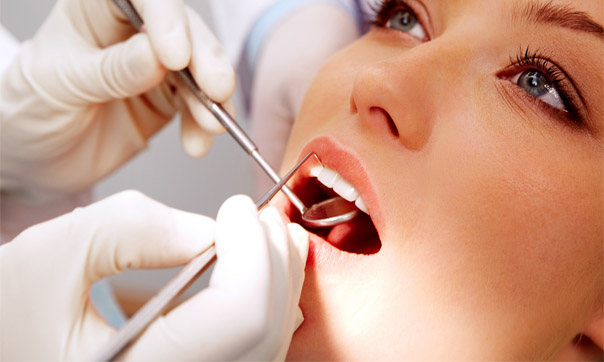
Regenerative procedures, coverage of gingival recessions, bone and gingival augmentations, plastic periodontal surgery, correction of alveolar ridge defects, crestal sinus lift, epithelial and connective tissue grafts, bone grafts, regenerative procedures around implants, soft tissue augmentation around implants, application of growth factors – PRP, PRF, A-PRF, I-PRF. Frenulectomies, resective techniques, clinical crown lengthening, vestibuloplasty. Treatment of angular bone defects. Surgical correction of gummy smile, treatment of passive eruption, gingivectomies, osteoplasty, ostectomy. Periodontal splinting.
Application of allografts and xenografts, membranes – resorbable and non-resorbable.
Ultrasonic tartar removal – Acteon Satelec.
Polishing with Aquacare.
Precise measurements and periodontal status recording.
Monitoring and maintenance of patients with periodontal disease.
After periodontal stabilization, application of implant therapy and prosthetics.
Gum and periodontal diseases are most often chronic conditions that usually progress without pain or other complaints. The primary cause of gum disease is microorganisms in dental plaque, which constantly forms on the surfaces of the teeth, above and below the gumline. These microorganisms damage the gums and the underlying bone.
The more plaque accumulates and is not removed by the patient and periodontist, the more severe the inflammation becomes, leading to the destruction of the tooth-supporting tissues (periodontitis). Microorganisms in dental plaque are highly resistant to antibiotics, and only mechanical removal ensures their elimination. Long-standing plaque mineralizes and turns into tartar, which must be professionally removed at intervals determined individually—most often every 3–4, 6 months, or annually. Tartar facilitates the retention of more plaque, which begins to develop deeper under the gumline.
A key sign of gum inflammation is bleeding, especially when detected by the dentist during gentle probing of the gums with a special tool (periodontal probe). The presence of such bleeding indicates that your gums need professional treatment. To determine the extent of gum and bone damage and the effectiveness of your oral hygiene, the periodontist performs a series of tests. Treatment of periodontal disease is carried out in three main phases, involving patient participation.
1. First Phase (Initial):
-
Removal of the causes of the disease (plaque, tartar, hopeless teeth, poorly placed fillings, crowns, and other restorations), sometimes requiring surgical intervention.
-
Training in the use of all necessary tools for mechanical plaque removal—brushes, floss, interdental brushes, etc.—and maintaining hygiene at levels compatible with healthy tissues.
-
If needed, products are prescribed (mouthwash, gel) to chemically suppress plaque.
-
If the disease is acute or if you have serious general health conditions, antibiotics may be prescribed to support healing after mechanical cleaning.
-
If consultations with other specialists (orthodontist, endodontist, etc.) are needed, they will be arranged.
The number and intervals of visits are determined individually, depending on the severity and progression speed of the disease, and on your level of commitment. If this treatment controls inflammation and your oral hygiene is effective, supportive therapy (Phase 3) continues. If some areas still show signs of disease despite good hygiene, the next phase begins:
2. Second Phase (Corrective):
-
A plan is created for surgical periodontal therapy if needed, including regenerative, resective, or plastic periodontal procedures.
-
Elimination of deep periodontal pockets (over 3 mm) remaining after Phase 1, through tissue removal or regenerative/reconstructive procedures based on the periodontist’s assessment (various regenerative techniques and materials are used).
-
Restoration of chewing efficiency through prosthetics if teeth have been lost.
Be aware that active periodontal treatment and surgical interventions may lead to:
-
Tooth exposure,
-
Sensitivity to thermal stimuli,
-
Changes in the ratio between soft tissues and teeth.
3. Third Phase: Maintenance.
Like all chronic patients, those with periodontal disease require regular follow-up visits to maintain their condition and monitor for relapses and new inflammations. The intervals between these visits are determined individually, depending on the severity and previous progression rate of your disease, and your ability to maintain low plaque levels that do not trigger inflammation.
If you fail to follow the recommended check-up schedule or do not maintain effective oral hygiene, this can compromise the results of the treatment, regardless of the achieved improvements and resources invested. In such cases, the responsibility for poor results, disease progression, or complications will be yours.

